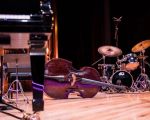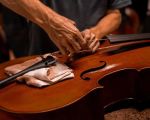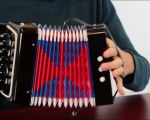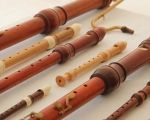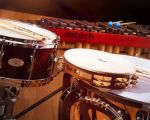- beethovens-musical-era-and-instrumental-context
- what-instruments-did-beethoven-use-in-his-music
- how-beethoven-revolutionized-orchestral-instrumentation
- rare-or-unexpected-instruments-in-beethovens-work
- bring-classical-inspiration-to-life-with-beat-trigger
1. Beethoven’s Musical Era and Instrumental Context
Ludwig van Beethoven composed at a transformative time in Western music. Straddling the Classical and Romantic periods, he not only inherited a rich orchestral tradition but also expanded it dramatically. To fully understand what instruments did Beethoven use in his music, it's important to appreciate the evolution of orchestration during the late 18th and early 19th centuries.
In Beethoven’s early works, he stayed close to the classical forms of Haydn and Mozart. But as his style developed, so did his use of instruments, often pushing the boundaries of what orchestras were doing at the time. He wasn't just using instruments—he was redefining their roles and interactions.
2. What Instruments Did Beethoven Use in His Music
Beethoven used a wide range of instruments in his compositions, with a particular emphasis on the symphonic orchestra. Standard orchestral instruments of his time included:
Strings: violins (first and second), violas, cellos, and double basses formed the backbone of his music. They delivered the emotional depth and dynamic shifts characteristic of his symphonies.
Woodwinds: flutes, oboes, clarinets, and bassoons were integral. Beethoven often gave woodwinds their own melodic lines, moving beyond mere harmonic filler.
Brass: horns, trumpets, and later, trombones (notably in the Fifth and Ninth symphonies). He used brass to add power and color, sometimes to dramatic effect.
Percussion: timpani were a staple, and he introduced bass drum, cymbals, and triangle in the Ninth Symphony—a bold move at the time.
Keyboard: While Beethoven is most associated with the piano (especially in his sonatas and concertos), he also composed for organ and harpsichord in earlier works.
3. How Beethoven Revolutionized Orchestral Instrumentation
Beethoven didn’t just write for available instruments—he changed how they were used. One clear example is his Symphony No. 5. The iconic four-note motif is passed between strings and woodwinds, creating a dialogue that hadn’t been explored in such a unified, thematic way before.
In Symphony No. 3 "Eroica," Beethoven extended the typical length and complexity of a symphony, demanding more endurance and expression from instrumentalists. His use of three horns (instead of two) was groundbreaking and added new harmonic dimensions.
By the time of his Ninth Symphony, Beethoven was blending voices with instruments, a visionary approach that laid the groundwork for Romantic composers like Wagner and Mahler. His innovations permanently influenced the size, scope, and style of orchestras.
4. Rare or Unexpected Instruments in Beethoven’s Work
While Beethoven mostly used the conventional instruments of his time, he occasionally stepped into unfamiliar territory. For instance, in the Ninth Symphony’s final movement, he incorporated Turkish percussion—bass drum, cymbals, and triangle—evoking a martial, almost exotic tone.
Another fascinating moment comes from the "Battle Symphony" (Wellington’s Victory), where he employed muskets and cannons (simulated by percussion and effects) to depict the battle between French and British forces. It was theatrical and vivid, showing his willingness to use instruments in bold, narrative ways.
These choices weren’t gimmicks—they were deeply integrated into the structure and purpose of the music, reflecting Beethoven’s innovative spirit and desire to explore sound in every dimension.
5. Bring Classical Inspiration to Life with Beat Trigger
Feeling inspired by Beethoven’s genius and curious about exploring orchestral instruments yourself? Whether you're starting out on violin or looking for a digital keyboard that captures the expression of classical compositions, Beat Trigger has you covered.
Our platform offers instruments, accessories, and educational tools designed to help musicians channel their inner Beethoven. From affordable student models to professional-grade gear, Beat Trigger curates products for musicians who value both innovation and tradition.
Beethoven’s music reminds us that instruments are more than tools—they’re voices. Let Beat Trigger help you find yours.


